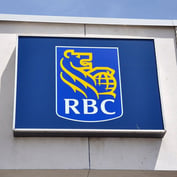July 3, 2002 — Mutual funds focused on defensive sectors of the market continued to outperform in the second quarter as new allegations of accounting fraud and news from WorldCom (WCOM) helped to push stock indexes to new lows for the year.
Gold and precious-metals funds, already strong performers in the first quarter, added to their gains in the second quarter as terrorism fears and a weakening U.S. dollar also heightened investor uncertainty. The average gold fund is up 65.7% so far this year after rising 36.8% in the first quarter.
Real-estate funds, also a defensive play with their dividend-paying REITs backed by tangible assets, are up 12.4% on average as of mid-year, followed by funds investing in natural resources, up 5.5%. Sector funds investing in financials are up slightly, 0.5% so far this year.
In contrast, funds investing in technology, telecom, health care, and biotechnology stumbled the most in the second quarter as the Nasdaq came close to the lows it saw following the terrorist attacks last September. The average tech fund lost 34.3% through June 21, while funds investing in telecom and communications lost 35.8% on average. The average health care fund was down 24.7% as of mid-year. A representative sampling of biotech funds by Standard & Poor’s showed average losses of 44.6%.
Precious metals
As losses in aggressive sector fund categories became much steeper in the second quarter, gold funds continued to rise as the price of gold climbed to the $320 level. The best-performing among gold funds as of mid-year include US Global Investors Fds:World Prec Minerals (UNWPX), up 92.1%, US Global Investors Fds:Gold Shares (USERX), up 82.1%, and First Eagle SoGen Gold Fund (SGGDX), up 79.7%.
Though all gold funds are up strongly so far this year, the top performers largely avoided shares of gold mining companies that hedge the price of gold, instead emphasizing mining shares leveraged to the price of gold. Funds that diversified out of gold mining companies, or had more exposure to metals tied to the industrial cycle, didn’t rise as much as did the more pure-play offerings on gold.
Frank Holmes, chief investment officer of US Global Investors, sees the fundamentals driving gold and gold shares still in place: falling mine output and exploration, the weakening dollar, and rising deficit spending. He continues to recommend a 5% weighting in gold. Though some gold fund managers believe gold and gold-related assets will continue to outperform other financial assets, seeing a mutli-year bull market for the metal, not every quarter will be up.
Real estate
Real estate funds rose in the second quarter, aided by relatively stable income producing REITs, but the strongest performers, such as Alpine US Real Estate Equity Fund/Y (EUEYX), continued to take a sizable stake in stocks of home-building companies. The Alpine US Real Estate portfolio has risen 26.8% so far this year. CGM Realty Fund (CGMRX), another strong performer with a sizable stake in home builders, is up 24.4%. Most real estate funds, however, more heavily invested in REITs, saw returns in the 10%-12% range.
Going forward, Sam Lieber of Alpine Real Estate Equity, believes the strongest gains in the sector over the next 12 months will continue to come from home-building stocks, which he sees as undervalued by 50%. His fund can swing, depending on where he sees the best opportunities in the real estate landscape. The portfolio is currently 35% in REITs, which Lieber thinks could be up another 5%-10% going forward to the end of the year. “What has been working lately is not the big cap super-liquid names where you need a lot of capital drive, but the smaller-cap plays, and that tends to be more real estate companies,” he notes.
Energy & Natural resources
Though funds investing in energy and natural resources pulled back in the second quarter after doing well at the start of the year on higher commodity prices, they still registered gains as of the end of June, up 5.5% on average. Some of the outliers include Prudential Natural Resources Fund/Z (PNRZX), up 23.3% as of mid-year, and Ivy Fund:Global Natural Resources/Adv (IGNVX), up 17.3%. Both funds take a broader approach to investing in resources, and were aided by exposure to precious metals as well as to energy services companies, which helped in the first quarter.








 July 03, 2002 at 08:00 PM
July 03, 2002 at 08:00 PM










